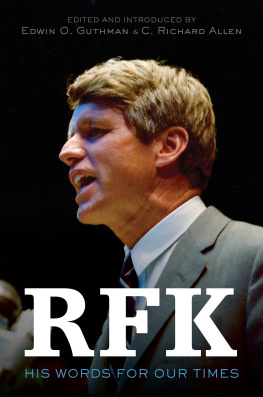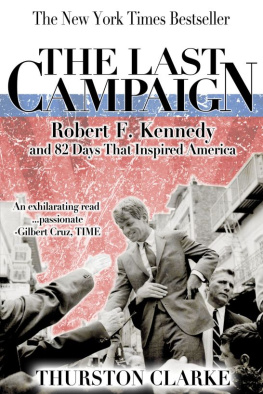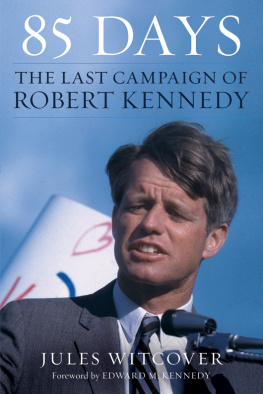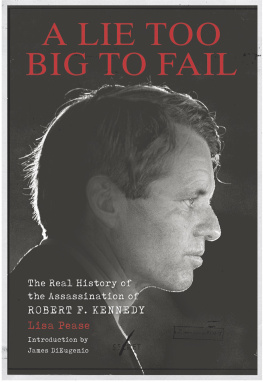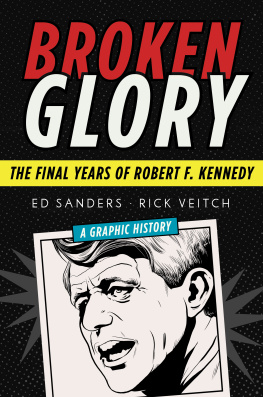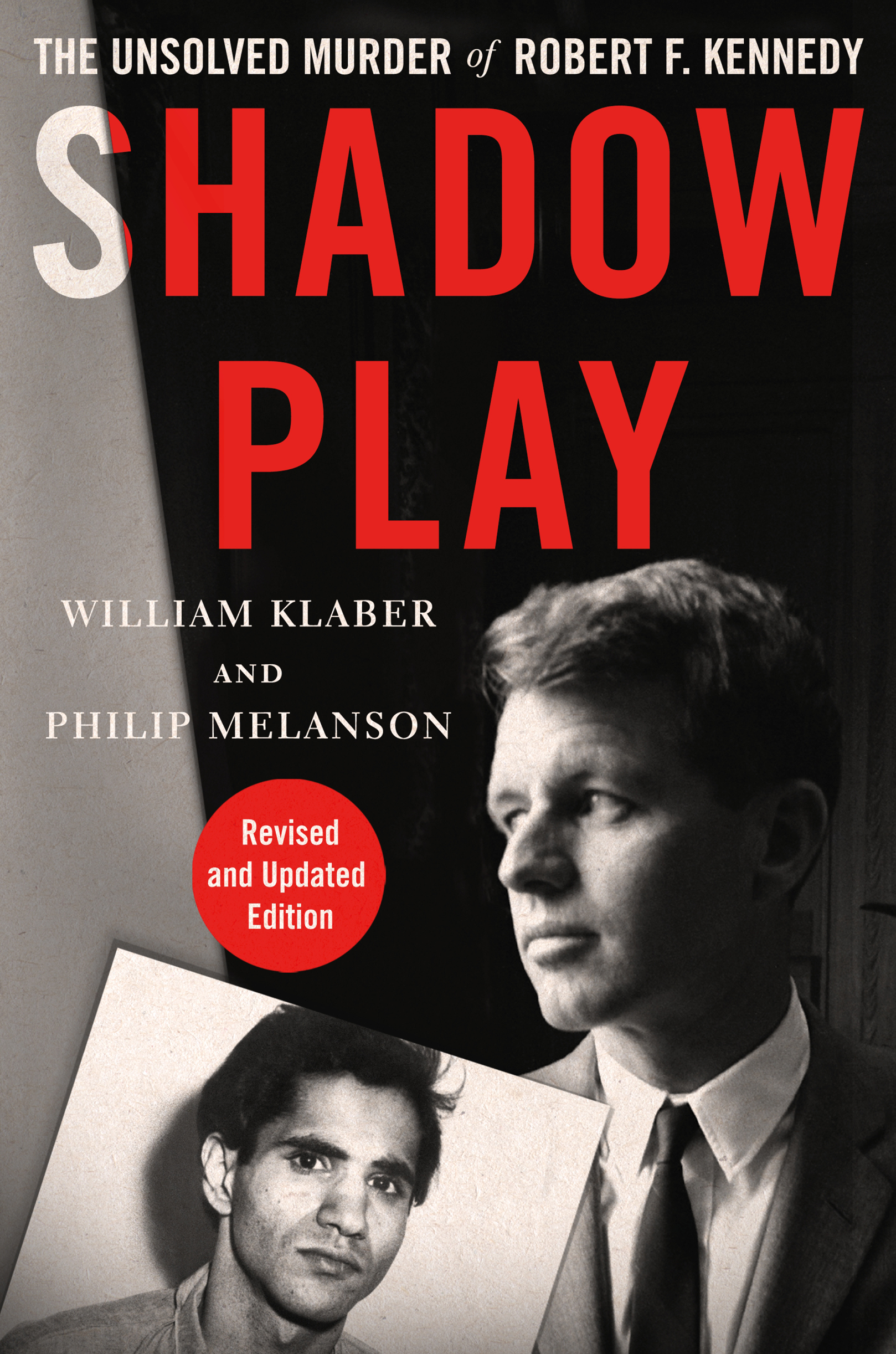Contents
Guide
Pagebreaks of the print version

The author and publisher have provided this e-book to you for your personal use only. You may not make this e-book publicly available in any way. Copyright infringement is against the law. If you believe the copy of this e-book you are reading infringes on the authors copyright, please notify the publisher at: us.macmillanusa.com/piracy.
Shadow Play is dedicated to the memory of Allard K. Lowenstein and Gregory Stone.
The 2018 edition carries the added dedications to Paul Schrade, who has fought for the truth for fifty years, and to the memory of coauthor Professor Philip Melanson, who created the Robert F. Kennedy Assassination Archives at the University of Massachusetts Dartmouth.
Robert Kennedys death, like the presidents, was mourned as an extension of the evils of senseless violence a whimsical fate inconveniently interfering in the workings of democracy. What is odd is not that some people thought it was all random, but that so many intelligent people refused to believe that it might be anything else. Nothing can measure more graphically how limited was the general understanding of what is possible in America.
former New York congressman Allard Lowenstein (1977)
As Robert Kennedy addressed the cheering crowd, Paul Schrade looked on with pride. An hour earlier he had been upstairs at the Ambassador Hotel, working with the senator on the details of his speech. Now he watched as Kennedy declared victory in the California primary and assumed his place as a front-runner for the Democratic presidential nomination.
When he had finished speaking, Robert Kennedy stepped off the stage into a dimly lit hallway en route to another press conference. He spotted Schrade and called out for him to follow. Kennedy then passed through a set of doors into a narrow kitchen area, where he paused to shake hands with several busboys. Finally, Schrade thought, a real president.
Just then, Paul Schrade experienced what felt like a severe electric shock. His body began to convulse, and as he fell to the floor he was certain he was being electrocuted.
When he regained consciousness a short while later, Paul Schrade felt bruises on his chest, where he had been stepped on. There was a sharper pain in his forehead, where a bullet was lodged. A short distance away Robert Kennedy lay mortally wounded.
Years later, the pain of that awakening still scarred Schrade. Sirhan Bishara Sirhan, to everyones satisfaction, had been convicted of Robert Kennedys murder, but Schrade was troubled because the wound in his own head made no sense, given the explanation offered for it by the Los Angeles police. When he tried to find out more, Schrade discovered that the police files were sealed. But why?
In 1974, at the urging of former New York congressman Allard Lowenstein, Paul Schrade joined a small group of citizens trying to open the secret police files. A year later he became a plaintiff in an unsuccessful lawsuit seeking to force disclosure. In the decade that followed, Schrade took the fight to Mayor Thomas Bradley and the Los Angeles Police Commission.
Finally, public pressure prevailed. In 1988 the police files in the Robert Kennedy assassination were made available for inspection by the California State Archives. Schrade and a small group of researchers (including this books coauthor Philip Melanson) began to slowly sift through the more than fifty thousand pages of released documents.
On April 2, 1992, almost twenty-four years after the assassination, a silver-haired Paul Schrade, accompanied by several colleagues, walked down the polished corridors of the Los Angeles County Courthouse pulling a small wagon carrying five heavy boxes. In the boxes were copies of a request, a formal petition asking the Los Angeles County Grand Jury to appoint a special prosecutor to investigate the Los Angeles Police Department for willful and corrupt misconduct in its investigation of the murder of Robert Kennedy. Accompanying the request were eight hundred pages of exhibits backing up claims of the LAPDs destruction of evidence, falsification of evidence, and coercion of witnesses.
In addition to that of Schrade, the petition bore the signatures of over fifty prominent citizens, including historian Arthur Schlesinger, Jr., former RFK press secretary Frank Mankiewicz, former Watergate prosecutor Sam Dash, author Norman Mailer, farm workers leader Cesar Chavez, and Harvard law professor Gary Bellow.
The request was also signed by several men who played a direct role in the events surrounding the assassination. One of these was William Bailey, who on the night of the murder was an agent for the FBI. Bailey inspected the crime scene and interviewed witnesses a few hours after the shooting. Over time he became convinced that the official version of the murder was a fabrication.
William Bailey taught criminal justice at a small college in New Jersey. Each year he put on a mock trial of Sirhan in which the class sat as jury. As Bailey explained, his trial of Sirhan was a tutorial in the suspension of judgment. I want to show them that in criminal investigations, things are not always what they seem.
Dr. Cyril Wecht also signed the grand jury petition. Wecht is a lawyer, a medical doctor, and a former president of the American Academy of Forensic Sciences. In the days following the death of Robert Kennedy, Wecht worked with Los Angeles County coroner Dr. Thomas Noguchi on the autopsy report. What he discovered alarmed him. To Wecht, the evidence strongly suggested that Sirhan Sirhan was not the source of the bullets that struck Robert Kennedy. This case has never been as simple as it looked, he would say. Forensically speaking, its a puzzle.
But the assassination of Robert Kennedy was not regarded as a puzzle by those who investigated the crime. The case against Sirhan Sirhan in their minds could hardly have been more open and shut. Robert Kennedy was shot and killed, and Sirhan Sirhan, firing a pistol, was apprehended only a few feet away. In time, the accused assassin would admit to the crime, offer a motive, and assert that he acted alonea prosecutors dream. Rumors of conspiracy seemed, for once, not only unfounded but easily refuted.
But this seemingly most apparent of political assassinations in the 1960s turns out to be, in many ways, the most complicated; certainly, the most bizarre. For example, while the accused assassin insisted he acted alone, numerous witnesses saw him being led to the crime by a beautiful woman, who shortly thereafter was seen running from the hotel laughing. She then vanished. More disturbing, ballistic evidence collected by the police strongly suggested that a second gun was fired during the murder and that Sirhan Sirhan may not have shot Robert Kennedy at all. Some of the most important pieces of this evidence also vanished. Most strange, despite his admission of guilt, the confessed assassin seemed genuinely to have no memory of the crime. What did this mean? Normally, one would expect a murder trial to sort through these circumstances to separate fact from fiction. Not in this case.
The trial of Sirhan Sirhan was, from the beginning, a self-conscious event. We are aware that this is not just another criminal matter, said Los Angeles district attorney Evelle Younger. The whole world is watching. So many newsmen, in fact, attended the trial, that an overflow courtroom had to be outfitted with video monitors, and those in attendance spoke about the trial in reverential terms. A classic of criminal jurisprudence, intoned Time magazine. Anticipating, incorrectly, a parallel proceeding against James Earl Ray, The New York Times said, both will represent trials of the American system of justice as much as trials of the men in the dock.


